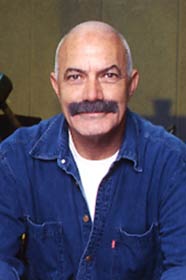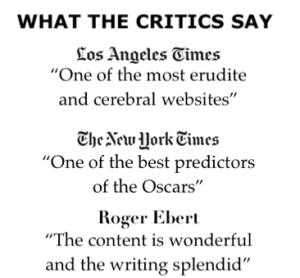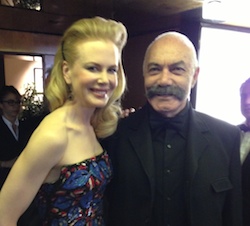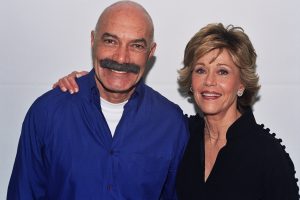“North by Northwest” is one of Hitchcock’s most entertaining and most commercially accessible works, ranking as the ninth top-grossing picture of the year, when it was initially released, on August 7, 1959.

Over the past week, I have derived immense pleasure from watching this picture on three consecutive nights. To commemorate the 50th anniversary of the movie’s release, we will run a series of articles about various aspects of “North by Northwest.”
Replete with suspense, action, political intrigue, crackling wit and black humor, North by Northwest is considered to be one of the master’s lighter works, not on par with “Vertigo” which preceded it, or “Psycho” which followed it. Hitchcock himself has described the film as “a fantasy of the absurd,” though he later added that it’s also “the summation of my Hollywood period.”

Yet a closer look reveals that it’s not only a quintessentially Hitchcockian film, but also one that deals way ahead of its time with such postmodern issues as the fluidity of identity, and the very notion of what constitutes a character.
The film also deals with various ordeals, caused by accident or chance; the effects of spatial arrangements and confinements (be it elevator, hotel room, or train) on human interactions. And it emphasizes the significance of rhythm and pacing as crucial variables of human existence in general and of movies as unique mediums in particular.
The stunning opening title sequence by graphic designer Saul Bass is considered to be the first to feature kinetic typography in its opening credits (black against green).
In top form and at the height of his popularity, Cary Grant plays Roger O. Thornhill, a successful advertising exec in New York City, who, despite middle-age and two marriages, is still dependent on his domineering and cynical mother (Jessie Royce Landis).
Philip Vandamm (the incomparable James Mason in yet another smooth velvety villainous turn) heads a group of spies exporting top U.S. government secrets. To that extent, they kidnap Thornhill, whom they mistake for one named George Kaplan. Rest of the saga goes on to show whether or not there is a man called George Kaplan.

At first, the shocked and bemused Thornhill thinks it’s a joke and tries to resist, only to realize that Vandamm and his men are dead serious, when they drag him to the latter’s estate and force a bottle of bourbon on him. Later that night, while being driven intoxicated, Thornhill takes control of the car and is arrested by the police for DUI.
Soon Thornhill becomes involved in a bizarre web of circumstantial evidence, when visiting the U.N. and witnessing the stabbing of a mysterious man who claims to be Vandamm and insists that, contrary to what Thornhill had witnessed, his wife had been dead for a long time.
Not neglecting the romantic angle, Hitchcock introduces his favorite femme, a duplicitous and icy-looking blonde named Eve Kendall (played by Eva Marie Saint at her most alluring), who turns out to be Vandamm’s mistress, but in actuality is a double agent working for the U.S.
In episode after episode, propelled form one location to another and from one risky situation to another, in an effort to trace Kaplan, Thornhill is nearly forced to become “George Kaplan.”
“North By Northwest” contains some three or four breathtaking scenes, which have become classics in film history. There’s the spectacular crop-dusting sequence in which Thornhill is terrorized by an aerial menace, a deadly airplane that pursues him in the open cornfields, leading to a crash from which he barely escapes. Alternating complete silence with ominous sound, and long shots with close-ups, the scene serves as a textbook for Hitchcock’s elaborately detailed, gloriously deliberate mise-en-scene.
Also noteworthy is the last reel, with a chase across the face of Mount Rushmore, a cliff-hanging episode in which Thornhill and Kendall cling to the rocks of Mount Rushmore, framed by the huge faces of the presidents (carved b John Gutzon Borglum). It’s here that Grant wisecracks: “I don’t like the way Roosevelt is looking at me.”
One of my favorite scenes–and also one of the film’s funniest and most outrageous ones—is early on, in the hotel’s elevator, when Roger Thornhill’s mother remarks to the two men (who had kidnapped her son the night before and do intend to kill him), “You gentlemen aren’t really trying to kill my son, are you?” The whole elevator, the mother, the villains, and the other passengers burst out laughing hysterically, while Thornhill stands helplessly in their midst.
The title of the picture is borrowed from Shakespeare’s “Hamlet”: “I am but mad north-northwest; when the wind is southerly I know a hawk from a handsaw.”
“North By Northwest” employs many of Hitchcock’s visual and thematic motifs. Take, for instance, the drunk-driving sequence, with Grant shown in mega close-ups, which recalls a similar drunk-driving scene in “Notorious,” (which co-starred Grant), with Ingrid Bergman as the driver, and Janet Leigh in “Psycho.”
End Notes
Casting:
In 1959, Cary Grant was 55 year old, the same age as Jessie Royce Landis, who plays his mother, Mrs. Thornhill, in the film.
MGM wanted Cyd Charisse for the role of Eve Kendall, but Hitchcock insisted on casting Eva Marie Saint (winner of Best Supporting Actress for “On the Waterfront”).
Hitchcock’s cameo appearance
Hitchcock is seen getting a bus door slammed in his face, just as his credit is appearing on the screen.
Cultural Status
It was selected in 1995 for preservation in the National Film Registry by the United States Library of Congress as being “culturally, historically, or aesthetically significant.
Oscar Nominations: 3
Story and Screenplay (Original): Ernest Lehman
Art Direction-Set Decoration (color): William A. Horning, Robert Boyle, Merrill Pye; Henry Grace and Frank McKelvy
Film Editing: George Tomasini
Oscar Awards: None
Oscar Context
In 1959, “Ben-Hur” swept most of the Oscars, including Art Direction and Editing. William Wyler’s historical epic won over Otto Preminger’s courtroom drama “Anatomy of a Murder,” which lost in each of its 7 categories; the Holocaust drama, “The Diary of Anne Frank,” which received 7 nominations and won 3; Fred Zinnemann’s morality tale “The Nine’s Story,” which also lost in each of its 7 nominations, and the superb British drama “Room at the Top,” which won 2 out of its 6 nominations.
The winner of the Original Story and Screenplay Oscar, as the category was then called, went to Russell Rouse, Clarence Green, Stanley Shapiro and Maurice Richlin for the comedy “Pillow Talk,” starring Rock Hudson and Doris Day.
Cast
Cary Grant as Roger Thornhill
Eva Marie Saint as Eve Kendall
James Mason as Phillip Vandamm
Jessie Royce Landis as Clara Thornhill
Leo G. Carroll as The Professor
Josephine Hutchinson as “Mrs. Townsend”
Philip Ober as Lester Townsend
Martin Landau as Leonard
Adam Williams as Valerian
Edward Platt as Victor Larrabee
Robert Ellenstein as Licht
Les Tremayne as Auctioneer
Philip Coolidge as Dr. Cross
Patrick McVey as Sergeant Flamm
Edward Binns as Captain Junket
Ken Lynch as Charlie
Maudie Prickett as Elsie the Maid
Malcolm Atterbury as Man at the crossroads
Tol Avery as State Police Detective
John Beradino as Sergeant Emile Klinger
Ned Glass as Ticket Seller
Doreen Lang as Maggie, Roger’s Secretary
Nora Marlowe as Anna, the housekeeper
Ralph Reed as Bellboy
Olan Soule as Assistant Auctioneer
Frank Wilcox as Herman Weitner
Robert Shayne as Larry Wade
Sara Berner as Telephone Operator (voice)
Credits
Produced by Alfred Hitchcock
Directed by Hitchcock
Screenplay: Ernest Lehman
Camera: Robert Burks
Editor: George Tomasini
Music: Bernard Herrmann
Production design: William A. Horning, Robert Boyle, Merrill Pye; Henry Grace and Frank McKelvy
Special Effects: A. Arnold Gillespie, Lee LeBlanc
Distributed by MGM
Release date: July 1, 1959
Running time: 136 minutes
Budget: $4.3 million











